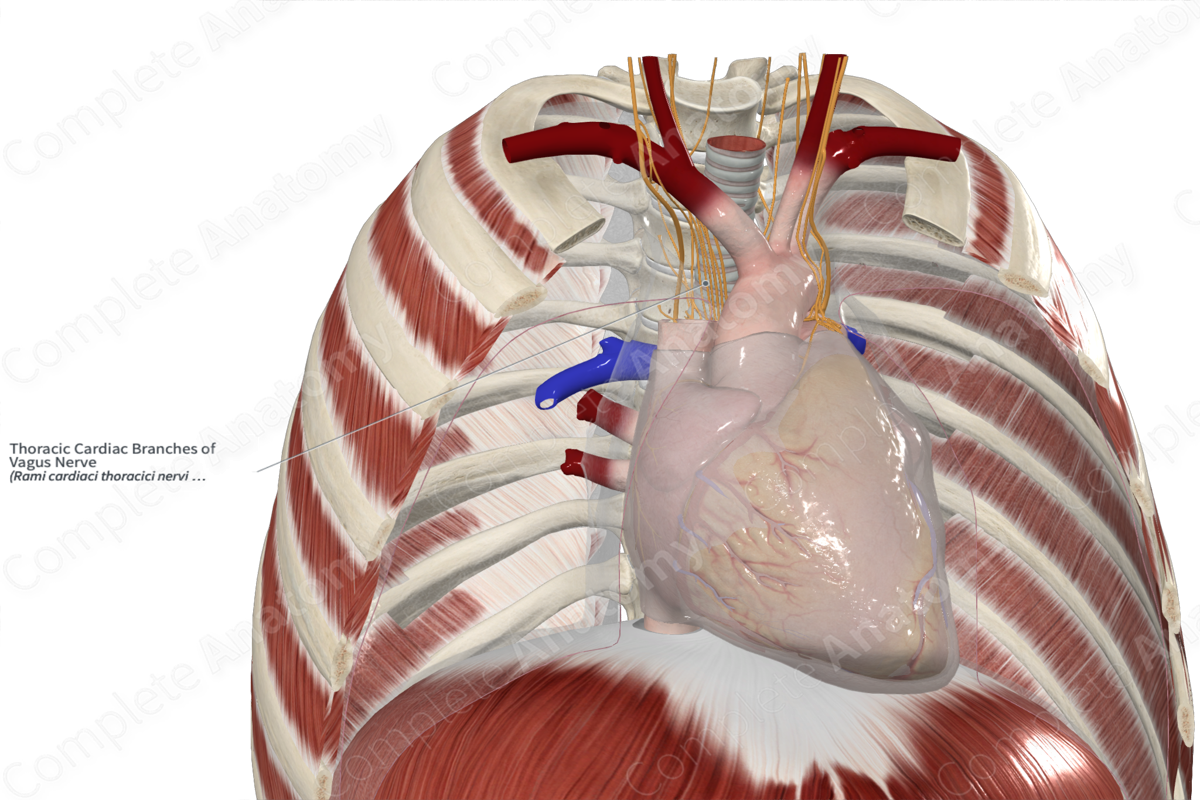
Quick Facts
Origin: Branches from the vagus and recurrent laryngeal nerves.
Course: Inferiorly to the superficial and deep cardiac plexuses.
Branches: None.
Supply: Parasympathetic efferent fibers: decrease heart rate and force of myocardial contraction; Parasympathetic afferent fibers: provide the afferent limb of cardiovascular reflexes associated with alterations in blood pressure and blood chemistry.
Related parts of the anatomy
Origin
The right and left thoracic cardiac branches of the vagus nerve emerge from both the right and left vagus nerves, as well as the recurrent laryngeal nerves in the thoracic cavity.
Course
On both sides, the thoracic cardiac branches of the vagus nerve run medially from the trunk of the vagus nerves and the recurrent nerves towards the cardiac plexuses.
Branches
The thoracic cardiac branches of the vagus nerve do not form branches per se. They do contribute along with other cardiac nerves to the formation of the cardiac plexuses (Netter, 2011).
Supplied Structures & Function
The inferior cervical cardiac branches of the vagus nerve provide parasympathetic innervation to the heart.
Parasympathetic efferent fibers supplying the heart, and when stimulated, decrease heart rate and reduce the force of myocardial contraction. Parasympathetic afferent fibers supplying the heart, when stimulated, provide the afferent limb of cardiovascular reflexes, such reflexes include those associated with alterations in blood pressure and blood chemistry.
References
Netter, F. H. (2011) Atlas of Human Anatomy. Netter Basic Science Series: Saunders/Elsevier.
Learn more about this topic from other Elsevier products


